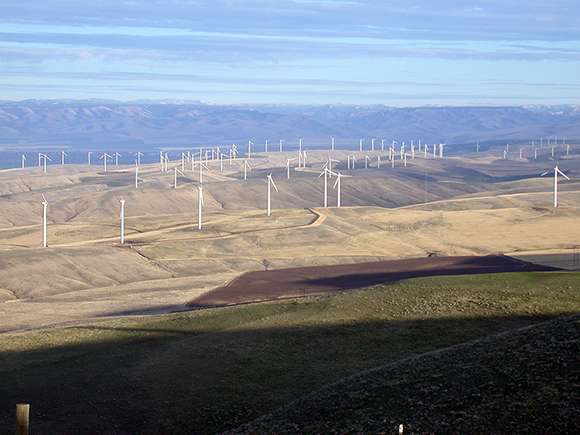How does the wind blow?

If wind were a steady, constant stream, wind energy production would be a snap. Trapping its capricious nature requires complex calculations and expert engineering. Predicting wind power requires additional twists and turns.
Scientists at Pacific Northwest National Laboratory and their partners focused on understanding the variability in forecast wind speed and wind power by plugging wind turbulence into a popular weather forecast model. The study used a range of values for model parameters instead of those that were generally assumed to be constants.
The team found that, depending on the exact values chosen, the wind power could range from 20 to 100 percent of the rated power during select time periods. Better understanding of wind's variability will have a huge impact on operation of the electric grid.
A big challenge in clean energy is measuring its quantity, and predicting when and how it will be available. Fortunately, meteorologists and atmospheric scientists have decades of experience measuring the wind and predicting its turbulence around structures, both natural and human-made. They put that experience to good use in this study.
The research in this paper will lead to better integration of wind power onto the electric grid, ultimately leading to increased use of renewable energy and reduced carbon emissions. The results of this work will help guide model development for continued improvement in tracking wind energy, and the design of field studies, such as the Department of Energy's (DOE) Second Wind Forecast Improvement Project (WFIP2).
This research used formal uncertainty quantification (UQ) techniques in conjunction with a popular process and prediction meteorology model, the Weather Research and Forecasting (WRF), to better understand forecasts of hub-height wind speed, where the measurement counts in wind energy. In this work, researchers investigated the WRF model response to changes in the values of specific constants used in the boundary-layer parameterization-calculations that help explain meteorological information in the lowest layer of the atmosphere. The research documented the model parameters having the largest influence on the simulated wind speed and potential wind power. The study used data collected in the spring as part of the Department of Energy (DOE) supported Columbia Basin Wind Energy Study (CBWES) to evaluate the simulation results.
The next step is to extend the analysis to the summer, fall, and winter seasons and to apply the techniques to alternate boundary-layer parameterizations commonly used in the WRF.
More information: Ben Yang et al. Sensitivity of Turbine-Height Wind Speeds to Parameters in Planetary Boundary-Layer and Surface-Layer Schemes in the Weather Research and Forecasting Model, Boundary-Layer Meteorology (2016). DOI: 10.1007/s10546-016-0185-2
Provided by Pacific Northwest National Laboratory



















